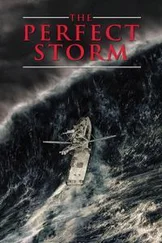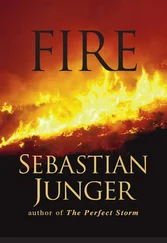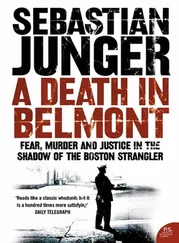To refuse a weapon was one thing, but that didn’t mean you couldn’t know anything about them. One hot, boring afternoon in the middle of the spring fighting season, Sergeant Al decided that Tim and I should be able to load and shoot every weapon at the outpost, and clear them if they jammed. We went over to the Afghan hooch and started with an AK. It was light and cheap-feeling, as if it were made out of tin, and Al said it has no internal recoil, so the entire force of the discharge goes straight into your shoulder. That makes it highly inaccurate after the first shot in a burst but mechanically so simple that it requires virtually no maintenance. You could hide it under a rock and come back six months later and it would still shoot.
The M4 fires a much smaller bullet, which means you can carry more ammunition for the same weight, but it’s not accurate over distance and tends to jam. Several times I’ve been in firefights where the man next to me was swearing and desperately trying to clear his weapon. The SAW was the smallest belt-fed weapon at Restrepo and had such a simple design that a monkey could have operated it. You pop open the feed-tray cover, lay the ammo belt into the receiver, slap the cover closed, and pull back the charging bolt; now you’re ready to fire 900 rounds a minute. The 240 is almost identical but larger and slower and the .50 is larger still, a barrel you could stick your thumb down and rounds the size of railroad spikes. With the .50 you could hit virtually anything in the valley you could see. During the Vietnam War, an American gunner supposedly attached a telescopic sight to his .50 and, with a single shot, knocked a messenger off a bicycle at two miles. It’s such a perfect weapon that the design has not changed in any meaningful way since World War I.
As a reporter it was hard to come to any kind of psychological accommodation with the weapons because they were everywhere — you couldn’t sit on someone’s bunk without moving an M4 or some grenades — and they only got more compelling as time went on. They had a kind of heavy perfection that made them impossible to ignore. What you really wanted to do was use them somehow, but that was so wildly forbidden that it took you a while to even admit you’d had the thought. After that you’d find yourself trying to imagine situations where it might be permissible without the obvious ethical problems. The only one I could come up with was a scenario that was so desperate and out of control — a hundred Taliban fighters coming up the draw and through the wire — that picking up a gun would be simply a matter of survival. That was too horrific to actually hope for, so I didn’t, but I’d find myself thinking that if it were to happen, I hoped I’d be there for it.
It’s a foolish and embarrassing thought but worth owning up to. Perfectly sane, good men have been drawn back to combat over and over again, and anyone interested in the idea of world peace would do well to know what they’re looking for. Not killing, necessarily — that couldn’t have been clearer in my mind — but the other side of the equation: protecting. The defense of the tribe is an insanely compelling idea, and once you’ve been exposed to it, there’s almost nothing else you’d rather do. The only reason anyone was alive at Restrepo — or at Aranas or at Ranch House or, later, at Wanat — was because every man up there was willing to die defending it. In Second Platoon Tim and I were the only ones who benefited from that arrangement for “free,” as it were, and it’s hard to overstate the psychological significance of that. (Once Tim found himself throwing ammo to a couple of guys who were stuck behind a Hesco during a fight, but that was as close as we ever got to actually doing anything.) There was a debt that no one registered except the men who owed it.
Collective defense can be so compelling — so addictive, in fact — that eventually it becomes the rationale for why the group exists in the first place. I think almost every man at Restrepo secretly hoped the enemy would make a serious try at overrunning the place before the deployment came to an end. It was everyone’s worst nightmare but also the thing they hoped for most, some ultimate demonstration of the bond and fighting ability of the men. For sure there were guys who re-upped because something like that hadn’t happened yet. After the men got back to Vicenza, I asked Bobby Wilson if he missed Restrepo at all.
“I’d take a helicopter there tomorrow,” he said. Then, leaning in, a little softer: “Most of us would.”
NOTHING FOR WEEKS BUT THE OMINOUS BUILDUP of ammo in the valley and enemy commanders saying strange, enigmatic things into their radios. “I’ll bring the Dishka and the milk,” a commander radioed once, though no one knew whether that was code for something or he was actually bringing real milk somewhere. According to the radio chatter there are a dozen mortar rounds in the valley, ammo for an 88 mm recoilless, and even some Katyusha rockets. In 2000 I’d gone through a Taliban rocket attack with a group of Tajik fighters in the north, and it was nothing I ever wanted to repeat. The rockets came in with a shrieking whistle that made me weird about teakettles and subway brakes for years.
One morning Patterson leads a patrol along the high road and then up the western spur through sweet-smelling sage and past an enemy fighting position littered with old brass. From there we could see over the tops of the Hescos straight into Restrepo. Patterson calls in the grid numbers to the KOP so the mortars hit it next time they take fire from that direction, and we continue climbing. We come out on a summit known as Peak One that the Americans and the Taliban more or less share. “When we’re up here it’s ours and as soon as we leave it’s theirs,” Mac says. There are American fighting positions facing south toward Yaka Chine and Taliban positions facing north toward the KOP. All of them are filled with garbage.
A monkey watches us at a safe distance from a rock, and someone says that if it’s holding a radio we can shoot it. We sit for a while looking south toward Yaka Chine and eventually we descend to a little plateau where the enemy has set up more fighting positions. Nothing moves in the valley and we continue off the plateau and down the spur back to Restrepo. It’s not even noon when we walk in the south gate and drop our gear and strip off our shirts. We sit on the ammo hooch drinking Gatorade and playing with Airborne, and after a while a single boom rolls through the valley.
“Road construction,” Patterson says.
I’m already lunging for my vest and helmet and I sit back down a little sheepishly. Another boom rolls past and everyone looks at each other. A third boom.
“That’s not road construction,” someone says.
Vegas is getting shelled and Dallas is getting hit and the KOP starts taking fire from the north. I crawl up to the LRAS position to watch mortars drop into the northern Abas Ghar and I’m up there for a few minutes with Cantu when rounds start snapping above our heads. Soon Mac scrambles up alongside us with a 240 and starts lighting up the Donga and Marastanau spurs and then Olson brings up another one to hit the ridges to the south and finally Bone arrives to start dropping bombs. Bone is the radio call sign for the B-1 bombers; they fly so high you can’t see or hear them, but the forward observer will say something like “bombs incoming,” and then you become aware of a strange, airy, rushing sound. Then a flash, a boil of smoke unfolding like a dirty flower across the valley, and finally a shuddering compression of air that reaches you seconds later.
Bone drops bombs to the south and east and the shooting stops and the men sit around smoking cigarettes and waiting to see what will happen. Most of them went through the firefight shirtless and a few didn’t even bother putting on their helmet or armor. After a while Lambert pokes his head up through the cutout to the .50 cal pit and says, “They just got radio chatter saying, ‘Go back to your positions and fire again.’”
Читать дальше
Конец ознакомительного отрывка
Купить книгу












